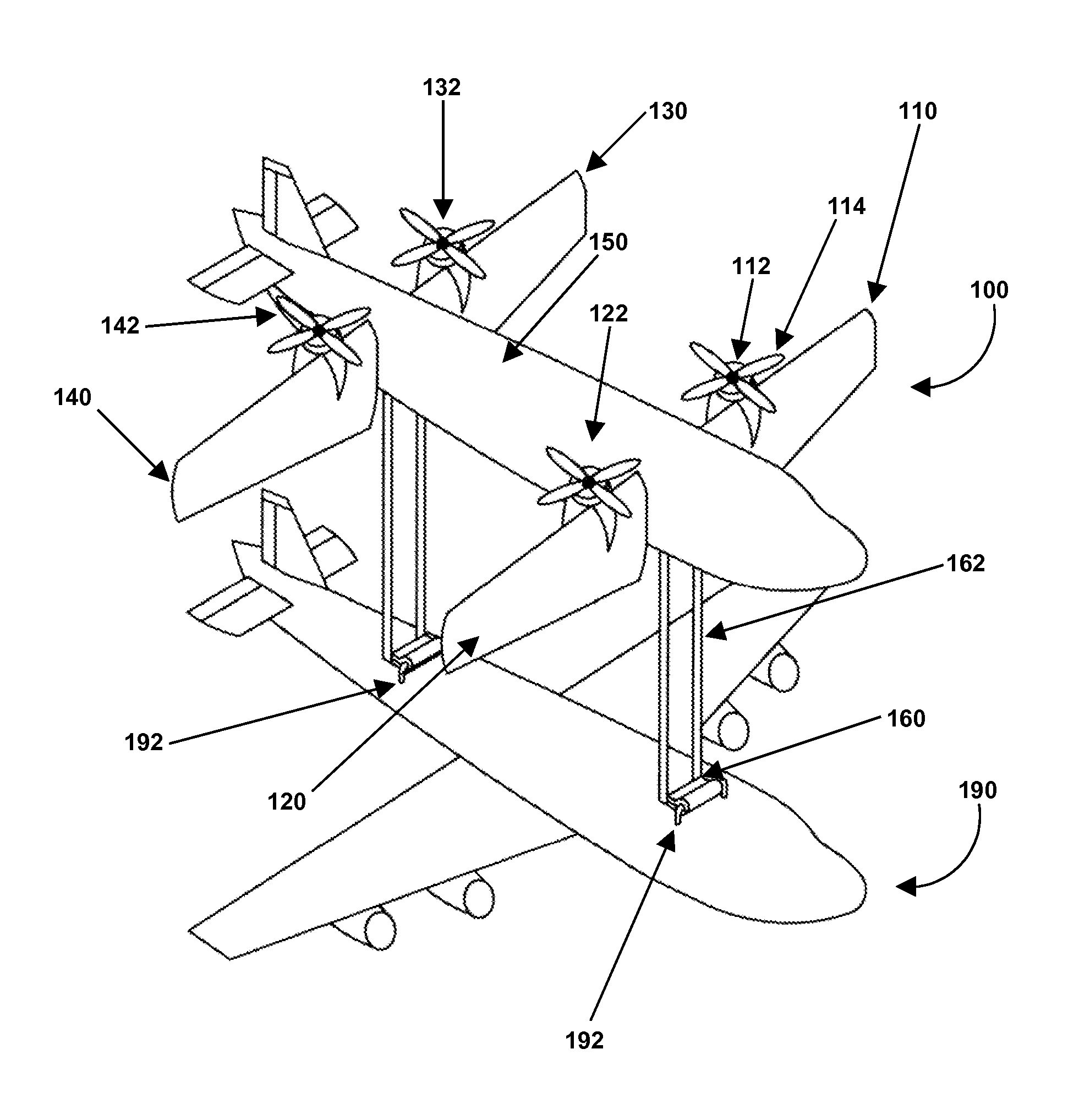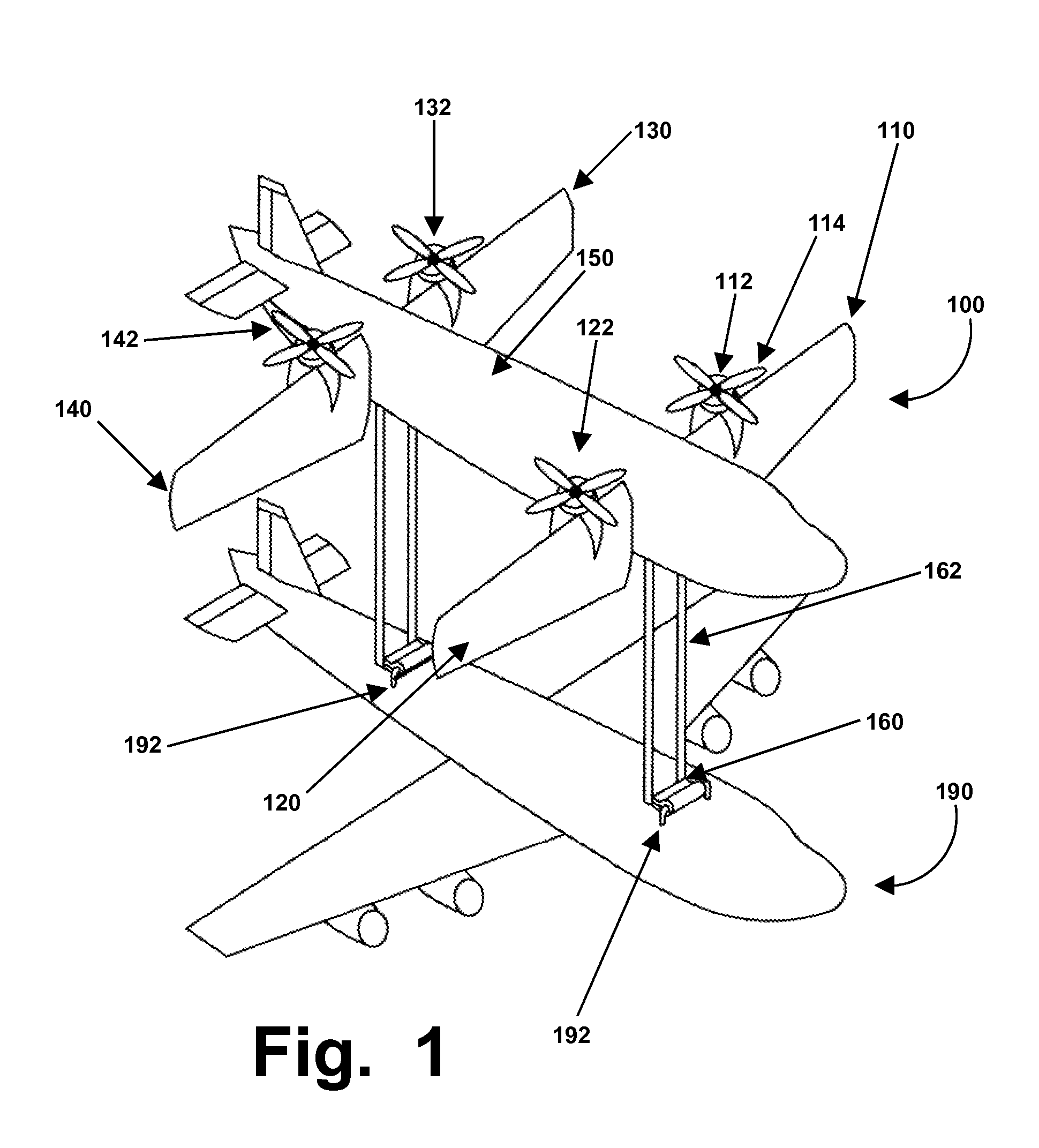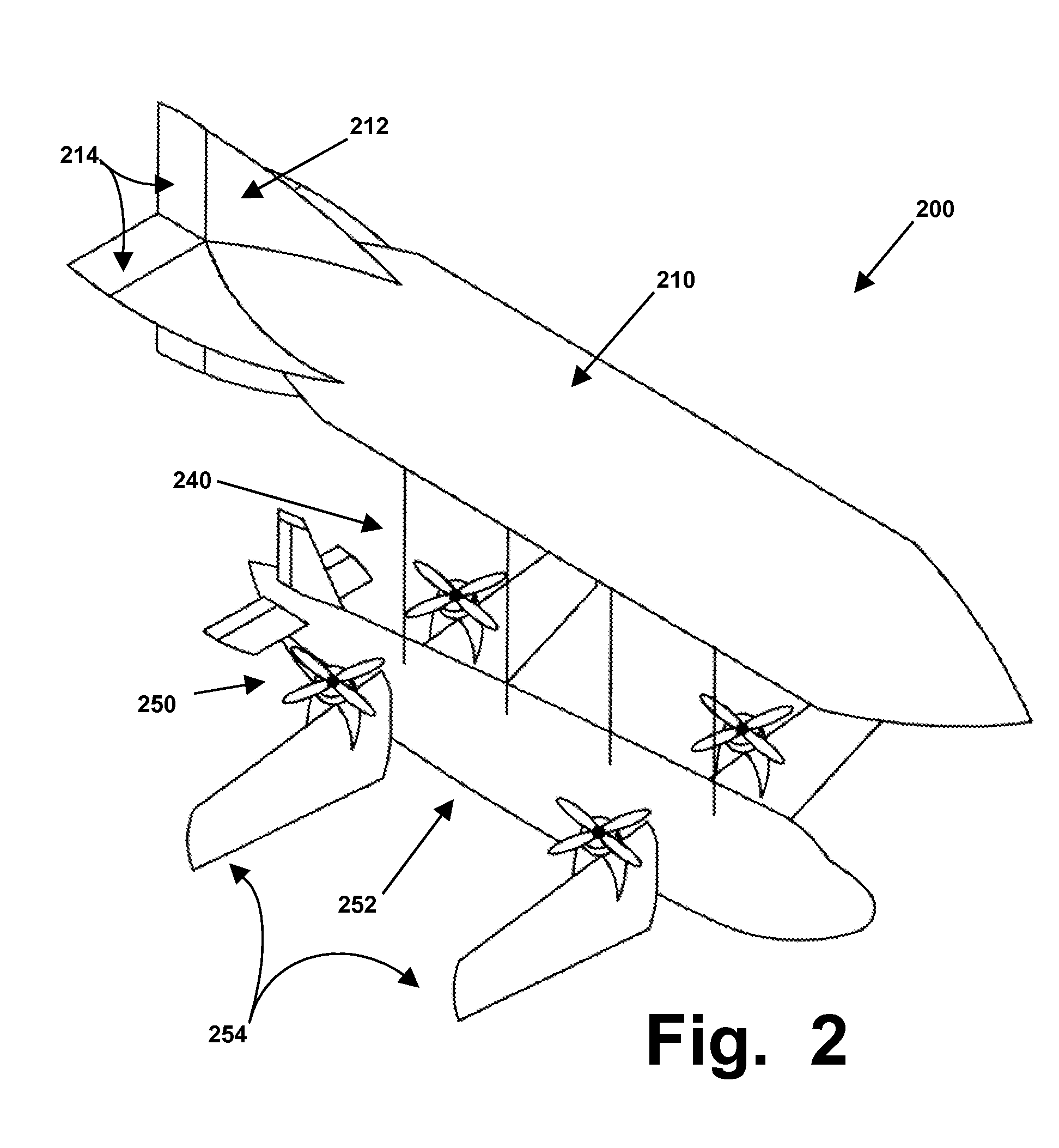Vertical Lifting of Airplanes to Flying Heights
- Summary
- Abstract
- Description
- Claims
- Application Information
AI Technical Summary
Benefits of technology
Problems solved by technology
Method used
Image
Examples
Embodiment Construction
[0033] As summarized above, a system for lifting airplanes to flying altitudes uses a vertical-takeoff aircraft with rotatable wings. The vertical-takeoff aircraft is referred to herein as a “lifting ferry”, or simply as a ferry, to distinguish it from a conventional fixed-wing airplane that will be lifted to a flying altitude and then released.
[0034] In one embodiment of this invention, illustrated in FIG. 1, lifting ferry 100 is being used to lift a fixed-wing passenger jet 190. The lifting ferry 100 has two front rotatable wings 110 and 120, and two rear rotatable wings 130 and 140, with at least one engine 112, 122, 132, and 142 mounted on each wing. The rotatable wings 110-140 will be designed in a manner comparable to the wings of vertical takeoff aircraft, such as the Osprey and Harrier airplanes developed for U.S. and British military forces.
[0035] Instead of being able to rotate through an entire circle, the rotatable wings only need to rotate through a 90 degree arc, fro...
PUM
 Login to View More
Login to View More Abstract
Description
Claims
Application Information
 Login to View More
Login to View More - R&D
- Intellectual Property
- Life Sciences
- Materials
- Tech Scout
- Unparalleled Data Quality
- Higher Quality Content
- 60% Fewer Hallucinations
Browse by: Latest US Patents, China's latest patents, Technical Efficacy Thesaurus, Application Domain, Technology Topic, Popular Technical Reports.
© 2025 PatSnap. All rights reserved.Legal|Privacy policy|Modern Slavery Act Transparency Statement|Sitemap|About US| Contact US: help@patsnap.com



